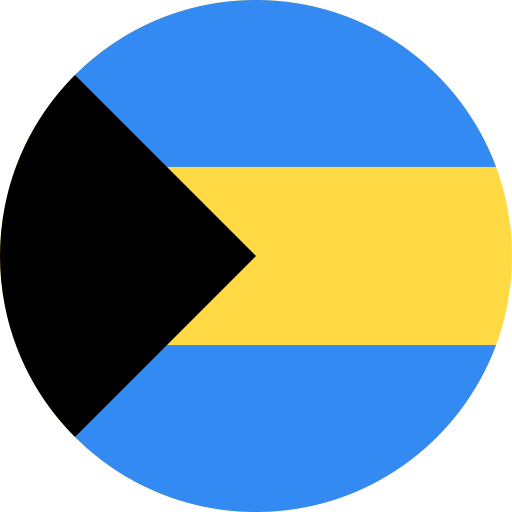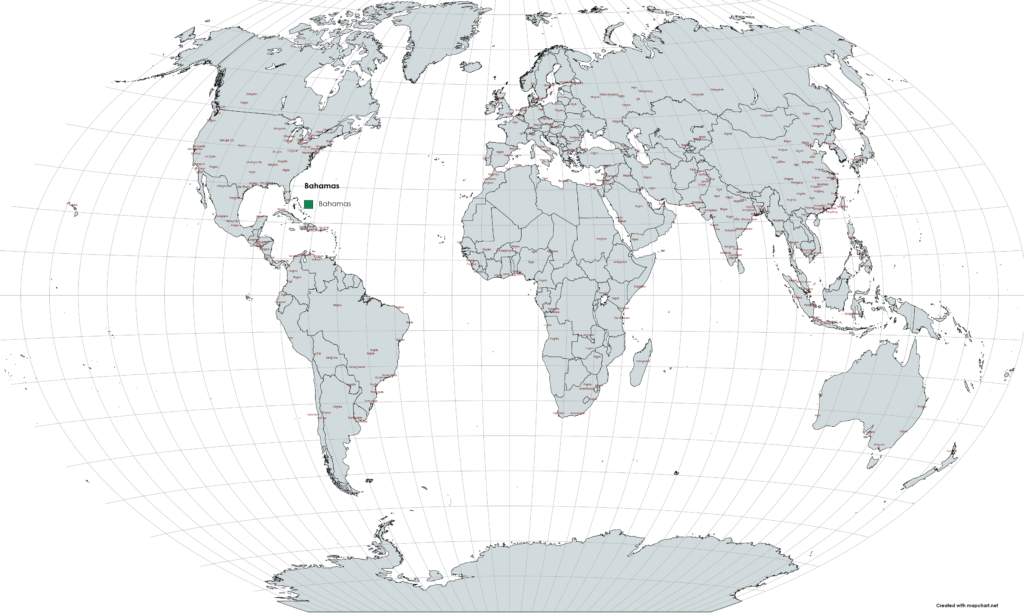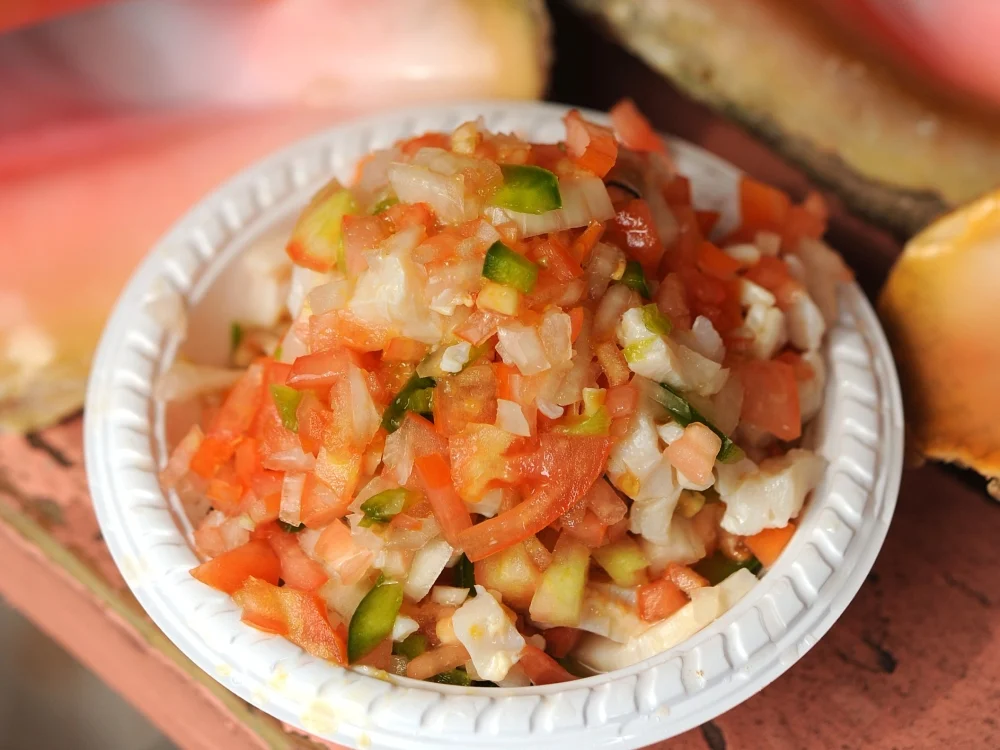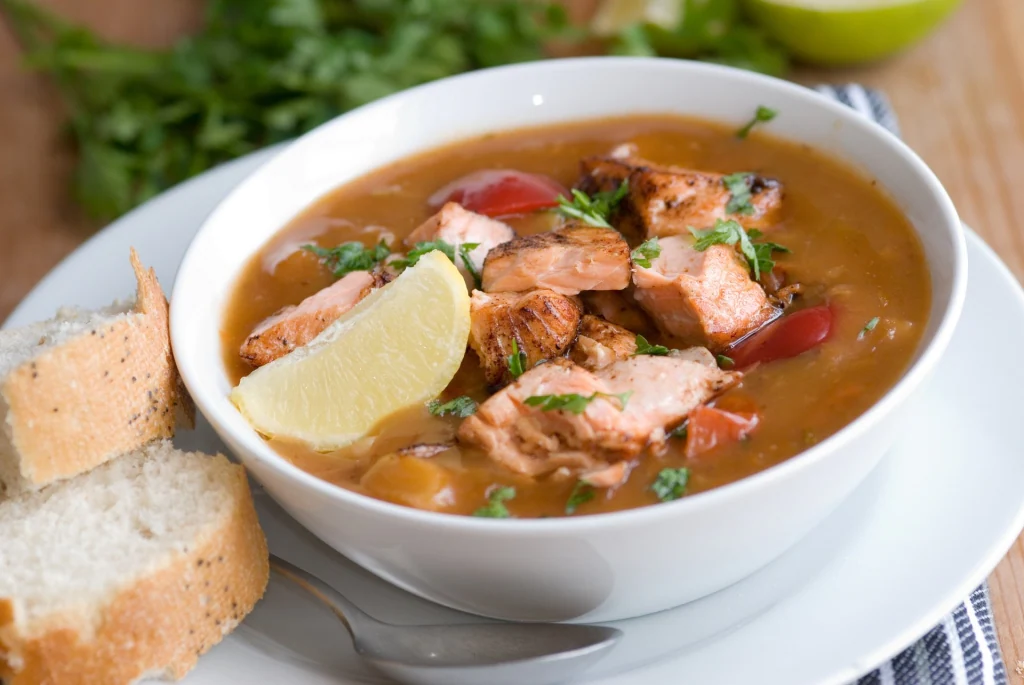Bahamas travel tips
Bahamas travel tips: Stunning tropical archipelago with turquoise waters, white-sand beaches, vibrant marine life, and a laid-back atmosphere, perfect for relaxation.
Districts 🌎
Bahamas travel tips. Here is a list of all the districts of the Bahamas.
Before you go 🛩
Important information you should know before your trip
Info

Capital | Nasáu
Flag Codes
ISO alpha-2 BS, ISO alpha-3 BHS
Currency
Badge | Bahamian dollar
CODE | BSD
NUMBER | 044
SYMBOL | $
FRACTION | Penny
Mobile Coverage
Dialing Code | +1-242
SIM Card
Coverage
3G / 4G / 5G
Mobile Networks |

Location
The Bahamas is an archipelago located in the Atlantic Ocean, southeast of the United States and north of Cuba. It is part of the West Indies in the Caribbean region. The Bahamas consists of more than 700 islands and cays, although not all of them are inhabited.
The country is situated to the east of the Florida coast, stretching from the southeastern coast of the United States down towards the northern coast of Cuba. The Bahamas is bordered by the Atlantic Ocean to the east and the Caribbean Sea to the west.
Nassau, the capital city of the Bahamas, is located on the island of New Providence, which is one of the main islands of the archipelago. Other notable islands in the Bahamas include Grand Bahama, Abaco, Eleuthera, Andros, Exuma, and the Berry Islands, among others.
The Bahamas is known for its stunning beaches, crystal-clear turquoise waters, and vibrant marine life. It is a popular tourist destination, offering a range of activities such as snorkeling, scuba diving, boating, fishing, and relaxing on beautiful beaches.
Currency
The currency of the Bahamas is the Bahamian dollar (BSD). The Bahamian dollar is the official currency of the country and is used for all transactions within the Bahamas. It is denoted by the currency code BSD and is further divided into 100 cents.
Banknotes in circulation include denominations of $1, $5, $10, $20, $50, and $100, featuring notable figures, landmarks, and symbols of the Bahamas. Coins are also used and come in denominations of 1 cent, 5 cents, 10 cents, 15 cents (rare), 25 cents (quarter), and 50 cents.
The Bahamian dollar is pegged to the United States dollar (USD) at a fixed exchange rate of 1 BSD to 1 USD. Both Bahamian dollars and U.S. dollars are widely accepted throughout the Bahamas, although it is recommended to have local currency for small purchases and when visiting more local establishments.
Languages
The official language of the Bahamas is English. English is widely spoken and understood throughout the country, and it serves as the primary language of government, education, business, and daily communication.
The English spoken in the Bahamas has its own unique accent and dialect, known as Bahamian English. It incorporates some local vocabulary, phrases, and pronunciation patterns that reflect the cultural and historical influences of the region. However, communication in English with speakers from other English-speaking countries is generally clear and easily understood.
In addition to English, some Bahamians may also speak other languages or dialects, particularly those with cultural or familial ties to other countries. These languages may include Haitian Creole, Spanish, or other languages brought by immigrants or visitors to the Bahamas.
Overall, English is the primary language used for communication in the Bahamas, making it easy for travelers and visitors to interact with locals and navigate daily life in the country.
Climate 🌡
The Bahamas has a tropical maritime climate characterized by warm temperatures, abundant sunshine, and high humidity throughout the year. The climate is influenced by the trade winds and the surrounding warm waters of the Atlantic Ocean and the Caribbean Sea. Here are the key features of the climate in the Bahamas:
Temperature
The Bahamas experiences warm temperatures year-round. The average temperature ranges from around 24°C (75°F) in winter to 31°C (88°F) in summer. Coastal areas generally have slightly cooler temperatures due to the moderating influence of the surrounding bodies of water.
Rainfall
The Bahamas has a wet and a dry season. The wet season typically runs from May to October, coinciding with the Atlantic hurricane season. During this time, the islands receive the majority of their rainfall, with occasional thunderstorms and tropical showers. The dry season, from November to April, is characterized by lower precipitation and generally more stable weather conditions.
Hurricane Season
The Bahamas is located in the Atlantic hurricane belt and is susceptible to tropical storms and hurricanes. The official hurricane season runs from June 1 to November 30, with the peak period typically occurring between August and October. During this time, it is important to monitor weather forecasts and follow any instructions or advisories issued by local authorities.
Sunshine
The Bahamas enjoys abundant sunshine throughout the year. The islands receive an average of about 3,000 hours of sunshine annually, making it an ideal destination for beach activities and outdoor pursuits.
Trade Winds
The Bahamas experiences consistent easterly trade winds, which provide a pleasant breeze and help moderate the temperature and humidity levels. These winds also contribute to the excellent sailing and boating conditions in the region.
The climate in the Bahamas is generally favorable for outdoor activities and tourism. However, it’s important to note that weather patterns can vary, and occasional variations, such as temperature fluctuations, strong winds, or heavy rainfall, may occur. It’s advisable to check local weather forecasts and travel advisories before planning any activities or trips to the Bahamas.
Bahamas travel tips
Here are some travel tips for visiting Bahamas:
Island Hopping:
Explore various islands; each has its charm. Nassau, Grand Bahama, and Exuma are popular choices.
Weather:
Tropical climate prevails. Pack light clothing, sunscreen, and insect repellent. Hurricane season is June to November.
Cuisine:
Savor Bahamian dishes like conch salad, rock lobster, and Bahama Mama cocktails.
Cultural Etiquette:
Respect the laid-back Bahamian culture; greetings and pleasantries are important.
Transportation:
Taxis and local buses are common. Renting a car on larger islands gives flexibility. View Guide.
Pig Beach:
Visit Exuma’s Pig Beach to swim with the friendly and famous swimming pigs.
Marine Reserves:
Respect marine life in protected areas; the Bahamas has extensive coral reefs and underwater ecosystems.
Enjoy the incredible beauty and diversity that Bahamas has to offer!

The best of the best
The Bahamas has a rich culinary tradition that reflects its Caribbean and African influences. The cuisine of the Bahamas is known for its fresh seafood, tropical fruits, and flavorful dishes.

Conch Salad
Conch is a type of mollusk that is a staple in Bahamian cuisine. Conch salad is a popular dish made with diced conch marinated in lime or lemon juice, mixed with onions, peppers, tomatoes, and various spices.

Cracked Conch
Another popular conch dish is cracked conch, where the conch meat is pounded, breaded, and deep-fried until crispy. It is often served with a side of fries or rice and peas.

Bahamian Stew Fish
This is a flavorful seafood dish made with a variety of fish, such as grouper or snapper, cooked in a rich tomato-based broth with onions, peppers, celery, and spices. It is often served with rice or Johnny cake (a type of cornbread).
Here are some typical foods of the Bahamas:
Peas and Rice: Peas and rice is a classic Bahamian side dish. It consists of pigeon peas (or sometimes black-eyed peas) cooked with rice, seasoned with spices such as thyme, onions, and peppers.
Boiled Fish: Boiled fish is a simple but delicious dish made with fresh fish, typically grouper or snapper, boiled with onions, peppers, and other seasonings. It is often served with johnnycake or bread.
Johnny Cake: Johnny cake is a type of cornbread that is a staple in Bahamian cuisine. It is made with cornmeal, flour, sugar, and butter or shortening, and it is baked until golden brown.
Guava Duff: Guava duff is a popular Bahamian dessert. It is a sweet pastry made with a dough filled with guava paste, rolled up, boiled, and then served with a warm butter sauce.
Goombay Smash: While not a food, the Goombay Smash is a famous Bahamian cocktail made with rum, coconut rum, pineapple juice, orange juice, and grenadine. It is a fruity and refreshing drink enjoyed by locals and tourists alike.
These are just a few examples of the delicious and diverse foods you can find in the Bahamas. The cuisine of the Bahamas celebrates the flavors of the Caribbean with an emphasis on fresh seafood and local ingredients.
Transportation 🚥
More information about this country
Choose your destination 📍🗺
Useful Links ✅





































